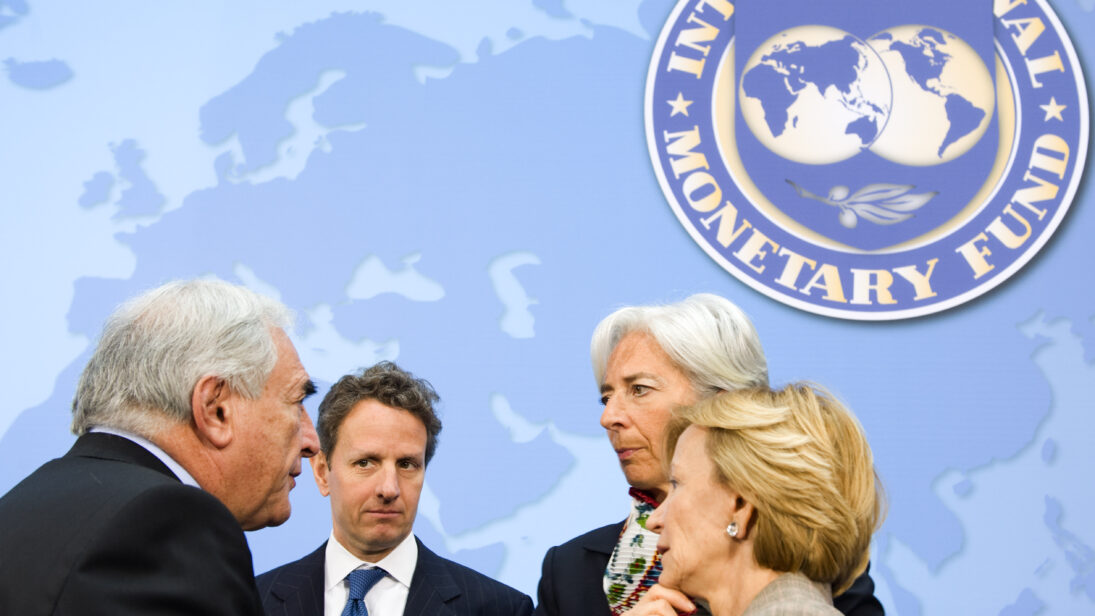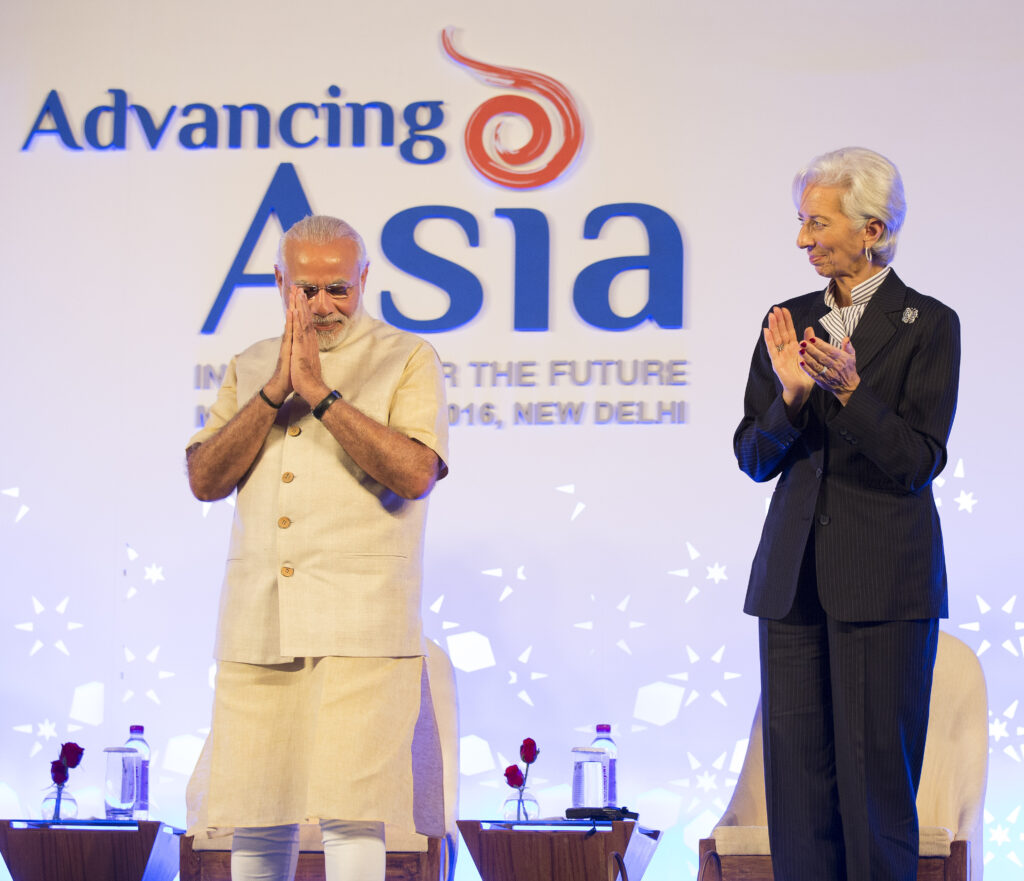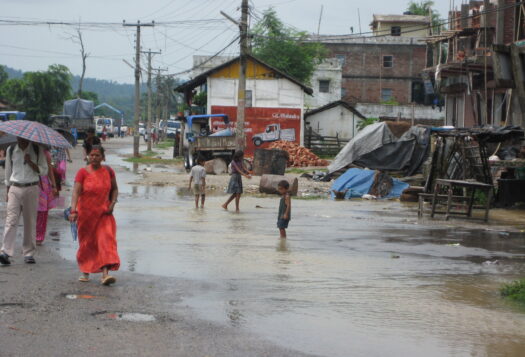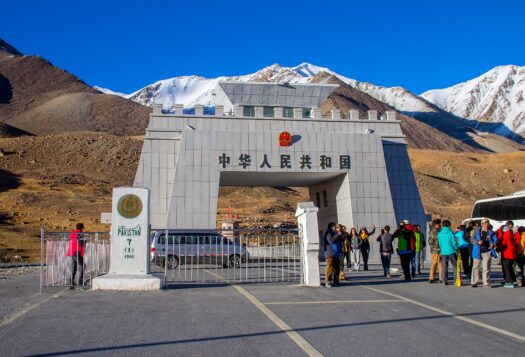
For most of the three decades after the end of the Cold War, economic “experts” and governments across large parts of the non-western world preached the gospel of the “Washington Consensus,” a set of social and economic policies centering the liberalization of trade and financial markets in the erstwhile Third World alongside the outsourcing and offshoring of production away from the western heartlands of the capitalist world-system. What became known as the era of neoliberal globalization was as significant for epochal structural shifts in the global capitalist order as for an ideological offensive that eulogized free markets, “rational” utility-maximizing individuals and firms, and lean government.
At the forefront of the globalization brigade were the Bretton Woods institutions: the International Monetary Fund (IMF) and World Bank (WB). These institutions were created to ensure a durable peace at the end of World War II by establishing a monetary stabilization system that would prevent future shocks and crashes like the ones that had destabilized Weimar Germany, precipitated the Great Depression, and led to the rise of fascism in Europe.
This arrangement gave the United States an effective veto over all major decisions, with Europe and Japan controlling most of the rest.
The IMF became the ultimate guarantor of an international financial order in which the currencies of all participating currencies were pegged to the U.S. dollar, which was itself backed by gold reserves. When individual economies suffered shocks threatening the system, the IMF would intervene with grants and loans to restabilize it. Meanwhile, the World Bank was tasked to undertake long-term developmental investments to extricate countries from poverty.
From its formation at the 1944 Bretton Woods conference until 1971, the IMF more or less ensured that currencies remained stable while regulating the possession and the movement of capital to prevent major economic crises or shocks. However, from the very start, the IMF and WB allocated power not based on “one country, one vote”—like the UN General Assembly—but rather on the size of each country’s economy. This arrangement gave the United States an effective veto over all major decisions, with Europe and Japan controlling most of the rest.
The role of the IMF first changed drastically in the early 1970s when Washington abandoned the Gold Standard after OPEC decided to raise the price of oil and the subsequent stagflationary spiral in the United States. When Ronald Reagan and Margaret Thatcher came to power at the end of the decade, their highly ideological administrations transformed the Bretton Woods institutions for their own ends, turning them into vehicles that functioned primarily for the advancement of powerful corporate lobbies and financial interests. Gradually, the IMF and World Bank were ideologically colonized by the Chicago School model of free-market policies, later known as the “Washington Consensus” or neoliberalism.
Henceforth, international financial institutions (IFIs)—including the IMF, WB, and later, the World Trade Organization—shifted their focus from exchange rate stability, Keynesian intervention, and balancing world trade to deregulation, financialization, aggressive trade liberalization, and unending structural adjustments through conditionalities attached to balance of payments support and developmental loans.
The “Washington Consensus” has fragmented considerably since the global financial crisis of 2007-2009. In more recent years, the COVID-19 pandemic and the Russia-Ukraine war have further magnified the volatility of the global capitalist order and thereby precipitated a deepening of doctrinal economic nationalism in Western countries.
The same cannot be said for the postcolonial world, where the policy mainstream continues to call for fiscal austerity, privatization, and liberalization. This essay is concerned specifically with the South Asia region, where multiple governments have recently contracted a new wave of IMF loans and thus been forced to accede to accompanying conditionalities.
The Recent Record
As noted at the outset, both the IMF and WB have—along with other multilateral donors like the Asian Development Bank, Inter-American Development Bank, and African Development Bank—been engaged with South Asia for the best part of seven decades. The financial and policy instruments deployed since the 1980s under the guise of “structural adjustment” are of specific concern here.
Of the major South Asian countries, Pakistan has, by far, contracted the highest number of structural adjustment loans—and total debt—from the IMF. Since the first agreement signed by the General Zia ul Haq regime in 1982, Islamabad has agreed to 22 further structural adjustment programs with the Fund; the most recent agreement worth more than $6 billion was signed in 2019. An impact evaluation of structural adjustment programs between 1981 and 2001 found that they adversely affected major macroeconomic outcomes, including overall deterioration in real per capita income and a considerable increase in unemployment (due to policies imposing budget deficit reductions, indirect taxes, exchange rate adjustments, cuts to subsidies and rise in energy costs from privatization).
In comparison, India has not borrowed from the IMF since the early 1990s. Meanwhile, Bangladesh recently contracted a loan from the IMF of approximately $4.7 billion as it continues to feel the effects of a decline in textile exports due to the global economic slowdown during and after the COVID-19 pandemic. Notwithstanding emergency relief during the COVID-19 lockdown, this is the first time in a decade that Bangladesh has been confronted with a balance of payments crisis that forced it to turn to the IMF.

The South Asian economy that has come to share the most similar trajectory to Pakistan recently is Sri Lanka. An epochal economic meltdown in 2022 led to mass protests and the eventual resignation of the then government, led by the infamous Rajapaksa brothers. Notably, Sri Lanka was the highest achieving South Asian economy in terms of human development indicators like health and education till the mid-1970s, after which it adopted the liberalization mantra of the IFIs replete with growing financial dependence on the IMF.
Sri Lanka’s previously impressive public welfare system has suffered progressive cutbacks in the subsequent five decades. Its overall economic performance has become increasingly vulnerable to global economic shocks due to its over-reliance on tourism and increasing financialization. The ongoing and acute effects of the COVID-19 pandemic forced the island nation to take a $3 billion loan in early 2023, even as significant parts of the population continue to struggle with an inflationary spiral and erosion of basic needs.
The smallest South Asian economies of Nepal, Bhutan, and the Maldives are also heavily reliant on tourism, thereby subject to global economic shocks’ ripple effects. But they have contracted proportionately less debt than Sri Lanka, Pakistan, and Bangladesh over time and have experienced far fewer boom-bust cycles than their bigger neighbors.
The Verdict
It would certainly be going too far to argue that the trajectory of all South Asian economies under the shadow of the “Washington Consensus” has been the same. The macroeconomic performance of India and Bangladesh has been noticeably superior to that of Pakistan and Sri Lanka, particularly in the 2000s at the height of the global outsourcing and offshoring boom. Trade and financial liberalization provided a major stimulus to sectors like pharmaceuticals, computer software, and textiles, in which multinational corporations made significant investments while partnering with local subcontracting firms.
But the ultimate measure of a country’s economic performance must surely be the welfare of its people. Till some years ago, neoliberal India was held up as a poster child of globalization. Its emergent middle class, in particular—sometimes estimated at 300 million strong—was seen as evidence of the tremendous success of the “Washington Consensus.” Bangladesh, too, enjoyed great acclaim for inducting tens of millions of women into the workforce who motored its world-renowned textiles industry.
Yet, beyond the gloss, poverty and inequality have surged in India and Bangladesh in recent years. A significant proportion of their famed middle class has fallen through the cracks. Indeed, the perils of a highly integrated global economic order, which privileges the unrestricted movement of capital, cheap labor reserves, and the pillage of nature have, to reiterate, become painfully evident during and after shocks like the COVID-19 pandemic and the Russia-Ukraine war.
To be sure, the “Washington Consensus” is now highly contested in South Asia and beyond by the “Beijing Consensus.”
Even more so, Sri Lanka and Pakistan are cautionary tales since their debt burdens now respectively exceed $50 billion and $100 billion, with structural adjustment conditionalities failing miserably to improve their fiscal positions, let alone arrest relatively stagnant human development outcomes.
Both economies have, of course, contracted significant debt since the turn of the century to the new big economic player in the region: China. To be sure, the “Washington Consensus” is now highly contested in South Asia and beyond by the “Beijing Consensus.” Only time will tell whether China displaces the United States as the primary mover and shaker in Islamabad and Colombo and, indeed, if a Chinese-driven political economy ushers in prosperity for working people at large.
Also Read: Political and Economic Controversies Surround Bangladesh’s IMF Loan
***
Image 1: IMF-World Bank Spring Meeting via Flickr
Image 2: IMF in Asia via Flickr


